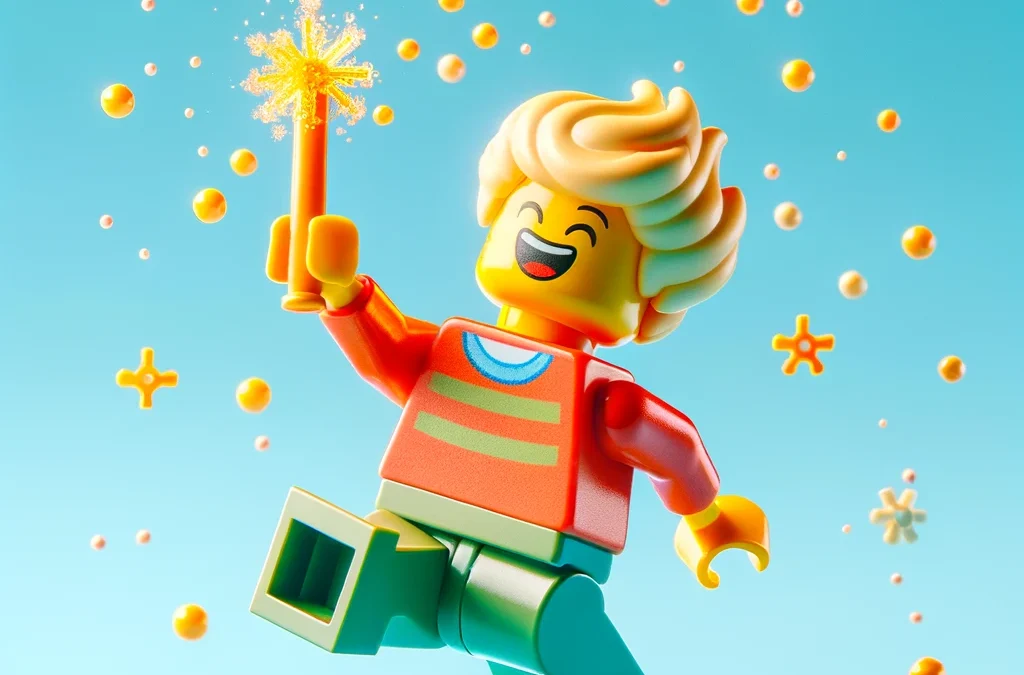Let’s Look Into How LEGO® Has Worked To Print Some Of The Finest Minifigures In The Toy Universe
More important than the brick itself, LEGO® has reached international acclaim with the help of its tiny friend: The LEGO® minifigure. When these LEGO® minifigures were first released in 1978, they were quite plain and maintained the classic, yellow hue of most minifigs.
Now, LEGO® has expanded and grown its printing process to be more elaborate and precise, giving LEGO® fans access to a whole new dimension of play!

Before We Jump Into The Print Portion Let’s Discuss What Gets Made
LEGO® has factories working around the clock molding LEGO® minifigures from ABS plastic, a highly durable polymer that allows us to play with lasting minifigures for decades.
In this process, LEGO® works to combine 9 parts: A head, a torso, two arms, two hands, a hip piece, and two legs. These nine pieces get pushed together to give us the minifigs we know and love…and it is also what we rush to put together first anytime we get a set!
The LEGO® Print And Press: Brick Edition
LEGO® parts, after each piece is molded by machinery, is siphoned to different conveyor belts based on the piece model. Each part that needs printing for the desired coloring and appearance receives multiple layers of printing.
For example, groups of LEGO® heads are meticulously moved through a manufacturing facility in groups. Each group will receive a print for the facial hair, then move forward and receive a print for the mouth, move forward again to receive a print for the eyes, and then a print for the white dots in the eyes.
As each LEGO® print is layered onto the respective piece, you get a full picture of what the LEGO® piece is going to look like. With these streamlined processes, LEGO® can print 23,000 heads an hour!
And just so you know, very similar printing protocols are carried out for other pieces — arms and legs are the exception because sometimes they maintain their base color and require no printing at all! Hence, why LEGO® printed arms and legs drive up the cost of sets, just like the expertly printed minifigures in LEGO® LOTR theme.
Are Mistakes Made In The Process?
While LEGO® has worked around the clock since its inception to create the finest-tuned process for LEGO® minifigure printing, mishaps can absolutely occur.
While LEGO® rarely misses pieces, misprints happen more often than not! A ton of LEGO® parts for minifigs move through the manufacturing plant and once-in-a-blue-moon the molded part is not correctly aligned with the printing machine. While this can be a minor inconvenience for LEGO®, misprints are highly sought after in the LEGO® collector world and are wicked cool if you receive one!
The Final Step And Quality Assurance
I mean this exactly how I say it: There are LEGO® minifigure quality control experts who diligently inspect minifigures as they come through to ensure you get the correctly printed minifig in your set. Like the LEGO® Master Builder, LEGO® manufacturing quality assurance is one of the many defined career roles they have at their company — and the job is taken very seriously.
Once it is determined that the batch has been successfully printed, another massive lane of mechanical grippers works to carefully piece the parts of the torso together (body torso, arms, and hands) so that these can be combined with the corresponding legs and head to complete your minifigure when it arrives in its standard plastic baggie.
Next time you build a set, take a moment to appreciate just how much work went into creating the greatest part of every LEGO® build: The minifigure.
The post How LEGO® Perfected Its Process For Printing Minifigures appeared first on Baumlinks.



![Validate my RSS feed [Valid RSS]](https://bricksrss.com/wp-content/uploads/2023/05/valid-rss-rogers.png)